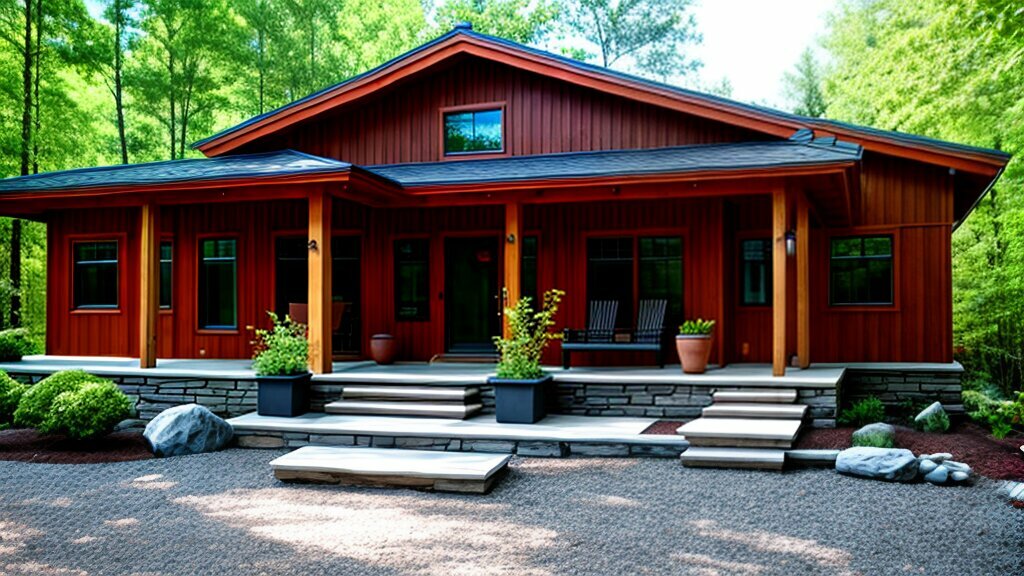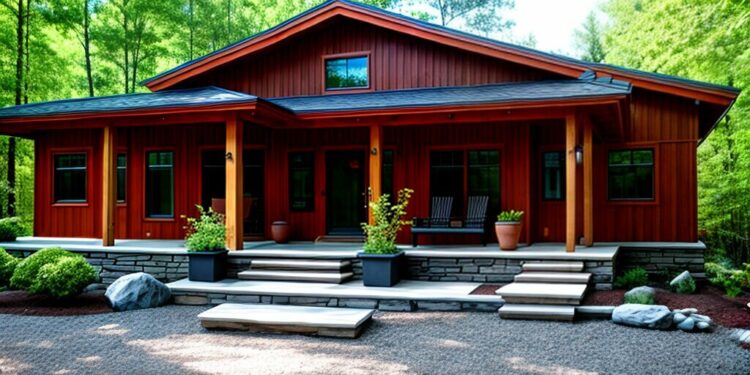Architectural Siding Styles That Reflect Cultural Identity sets the stage for this enthralling narrative, offering readers a glimpse into a story that is rich in detail and brimming with originality. From traditional designs to modern interpretations, the influence of culture on architectural siding is a fascinating journey worth exploring.
As we delve deeper into the different styles, materials, and influences behind architectural siding, a world of cultural significance unfolds before our eyes, showcasing the unique identities embedded in these structures.
Architectural Siding Styles
Architectural siding styles play a crucial role in reflecting the cultural identity of different regions around the world. The use of various materials and designs in siding can be traced back to historical traditions, climate conditions, and available resources. Let's explore how architectural siding styles vary based on geographical locations and the significance they hold in representing cultural heritage.
Identify Different Architectural Siding Styles
- European Half-timbered: Common in European countries like Germany, France, and England, featuring exposed wooden beams with infill panels of brick or stucco.
- Cedar Shingles: Popular in North America, especially in coastal regions, cedar shingles offer a natural, rustic look and excellent weather resistance.
- Tudor Revival: Influenced by English Tudor architecture, this style includes steeply pitched roofs, decorative half-timbering, and stucco or brick exteriors.
Significance of Architectural Siding in Reflecting Cultural Identity
Architectural siding serves as a visual representation of a region's cultural heritage, traditions, and values. The choice of materials, colors, and patterns in siding can convey a sense of belonging and identity unique to each culture.
Explain How Architectural Siding Styles Vary Based on Geographical Locations
Geographical factors such as climate, natural resources, and historical influences greatly impact the architectural siding styles used in different regions. For example, regions with abundant wood supply may favor wooden siding, while areas prone to hurricanes may opt for durable materials like cement fiber.
Examples of Architectural Siding Materials Commonly Used in Different Cultures
- Japan: Traditional Japanese homes often feature siding made of cedar wood, known for its durability and resistance to insects.
- Middle East: Stucco and stone are commonly used in Middle Eastern architecture, providing insulation against the desert heat.
- Scandinavia: Clapboard siding, typically made of pine or spruce, is prevalent in Scandinavian countries like Sweden and Norway, offering protection against harsh winters.
Cultural Influences on Architectural Siding
In the realm of architectural siding, cultural beliefs and traditions play a significant role in shaping the choice of siding styles. These influences can be seen in the materials used, the colors selected, and the overall design of the siding.
Historical Events and Architectural Siding Choices
Historical events have a profound impact on architectural siding choices. For example, in regions where certain materials were abundant due to historical trade routes, such as cedar in the Pacific Northwest, we see a prevalence of siding styles using these materials.
Additionally, the influence of colonialism or industrialization can also be reflected in the choice of siding materials and styles.
Climate and Environmental Factors in Siding Selection
Climate and environmental factors also play a crucial role in determining the selection of siding materials. In areas prone to extreme weather conditions, such as hurricanes or heavy rainfall, homeowners may opt for more durable and weather-resistant siding materials like vinyl or fiber cement.
Conversely, in arid regions, siding choices may focus more on materials that offer insulation and energy efficiency.
Societal Values Reflected in Siding Design
The design of architectural siding can also reflect societal values. For instance, in communities where sustainability and eco-friendliness are highly valued, siding choices may lean towards materials like reclaimed wood or recycled plastic composites. On the other hand, in regions where tradition and heritage are paramount, siding styles that harken back to historical architectural elements may be preferred.
Traditional vs. Modern Architectural Siding

Traditional architectural siding styles have a rich history rooted in specific cultural identities, using materials like wood, stone, or brick to create intricate designs that reflect the heritage of a particular region. On the other hand, modern architectural siding takes a more innovative approach, incorporating new materials and technologies to achieve sleek, minimalist looks that cater to contemporary tastes.
Evolution of Siding Materials
- Traditional siding materials such as wood and stone have been replaced with more durable and low-maintenance options like vinyl, fiber cement, and metal.
- Modern advancements in manufacturing have led to the development of engineered wood products that mimic the look of natural wood but offer better resistance to rot, pests, and moisture.
- Green building practices have also influenced modern siding choices, with the use of eco-friendly materials like recycled plastic composites and sustainable wood products.
Aesthetics of Traditional vs. Modern Siding
- Traditional siding designs often feature intricate patterns, textures, and colors that pay homage to historical architectural styles and craftsmanship.
- Modern siding, on the other hand, tends to prioritize clean lines, simple profiles, and a more minimalist aesthetic that complements contemporary building designs.
- While traditional siding focuses on authenticity and heritage, modern siding embraces innovation and functionality, creating a striking contrast in visual appeal.
Blending Tradition with Innovation
- Contemporary architectural siding designs often blend elements of traditional and modern styles to create a unique fusion that celebrates the past while embracing the future.
- Examples include using traditional materials like wood in a modern way, incorporating bold colors or geometric shapes inspired by traditional motifs, or playing with scale and proportion to create a visually dynamic facade.
- By combining the best of both worlds, architects and designers can create siding that is not only visually stunning but also pays homage to cultural identity while pushing the boundaries of design innovation.
Case Studies of Architectural Siding Reflecting Cultural Identity
Architectural siding plays a crucial role in reflecting the cultural identity of a community or region. Let's explore specific buildings where architectural siding details showcase rich cultural symbolism.
Case Study 1: Traditional Japanese Machiya Houses
In Japan, traditional machiya houses feature unique architectural siding known as "koshi" or wooden lattice screens. These screens are intricately crafted with geometric patterns, allowing natural light to filter through while maintaining privacy. The use of natural materials like wood and earthy tones reflects the connection to nature and simplicity valued in Japanese culture.
Case Study 2: South African Ndebele Wall Art
The Ndebele people of South Africa are known for their vibrant wall art, which often extends to the architectural siding of their homes. Brightly colored geometric patterns and motifs adorn the walls, symbolizing cultural beliefs, rituals, and identity. The use of bold colors like red, yellow, and blue reflects the Ndebele tradition of celebrating life and creativity.
Case Study 3: Scandinavian Stave Churches
Stave churches in Scandinavia showcase intricate wooden architectural siding with carved details and dragon motifs. These designs draw inspiration from Norse mythology and Viking craftsmanship, reflecting the cultural heritage of the region. The use of wood and craftsmanship techniques passed down through generations highlights the importance of preserving traditional architectural styles in modern architecture.
Closing Notes
In conclusion, Architectural Siding Styles That Reflect Cultural Identity not only highlights the beauty of diversity in design but also underscores the importance of preserving cultural heritage in architecture. As we continue to admire and analyze these intricate details, we gain a deeper appreciation for the stories they tell and the traditions they uphold.
Top FAQs
How do architectural siding styles vary based on geographical locations?
Architectural siding styles vary based on geographical locations due to differences in climate, available materials, and cultural influences.
What role do societal values play in the design of architectural siding?
Societal values play a significant role in the design of architectural siding, often influencing the choice of materials, colors, and patterns used.
How have modern advancements influenced the evolution of siding materials?
Modern advancements have led to the development of new siding materials that offer enhanced durability, sustainability, and aesthetic appeal compared to traditional options.









